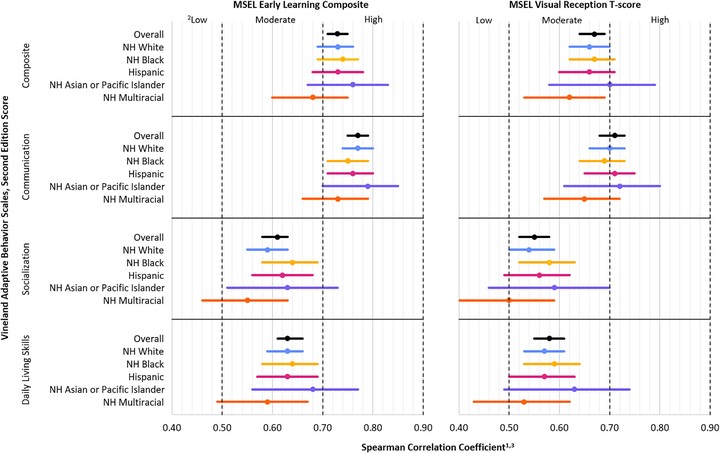Racial and ethnic disparities in the co-occurrence of intellectual disability and autism: Impact of incorporating measures of adaptive functioning

Abstract
Intellectual disability (ID) commonly co-occurs in children with autism. While diagnostic criteria for ID require impairments in both cognitive and adaptive functioning, most population-based estimates of the frequency of co-occurring ID in children with autism– including studies of racial and ethnic disparities in co-occurring autism and ID – base the definition of ID solely on cognitive scores. The goal of this analysis was to examine the effect of including both cognitive and adaptive behavior criteria on estimates of co-occurring ID in a well-characterized sample of preschool children with autism. Participants included 3,264 children with research or community diagnoses of autism enrolled in the population-based Study to Explore Early Development (SEED) Phases 1-3. Based only on Mullen Scales of Early Learning (MSEL) Composite cognitive scores, 62.9% (95% confidence interval [CI]: 61.0, 64.7%) of children with autism were estimated to have co-occurring ID. After incorporating Vineland Adaptive Behavior Scales, Second Edition (VABS-II) Composite or domains criteria, co-occurring ID estimates were reduced to 38.0% (95% CI: 36.1, 39.8%) and 44.9% (95% CI: 43.0, 46.8%), respectively. After incorporating VABS-II Composite or domains criteria and adjustment for selected socioeconomic variables, the increased odds of meeting ID criteria for non-Hispanic Black children and Hispanic children relative to non-Hispanic White children observed when only MSEL criteria were used were substantially reduced, though not eliminated. This study provides evidence for the importance of considering adaptive behavior as well as socioeconomic disadvantage when describing racial and ethnic disparities in co-occurring ID in epidemiologic studies of autism.